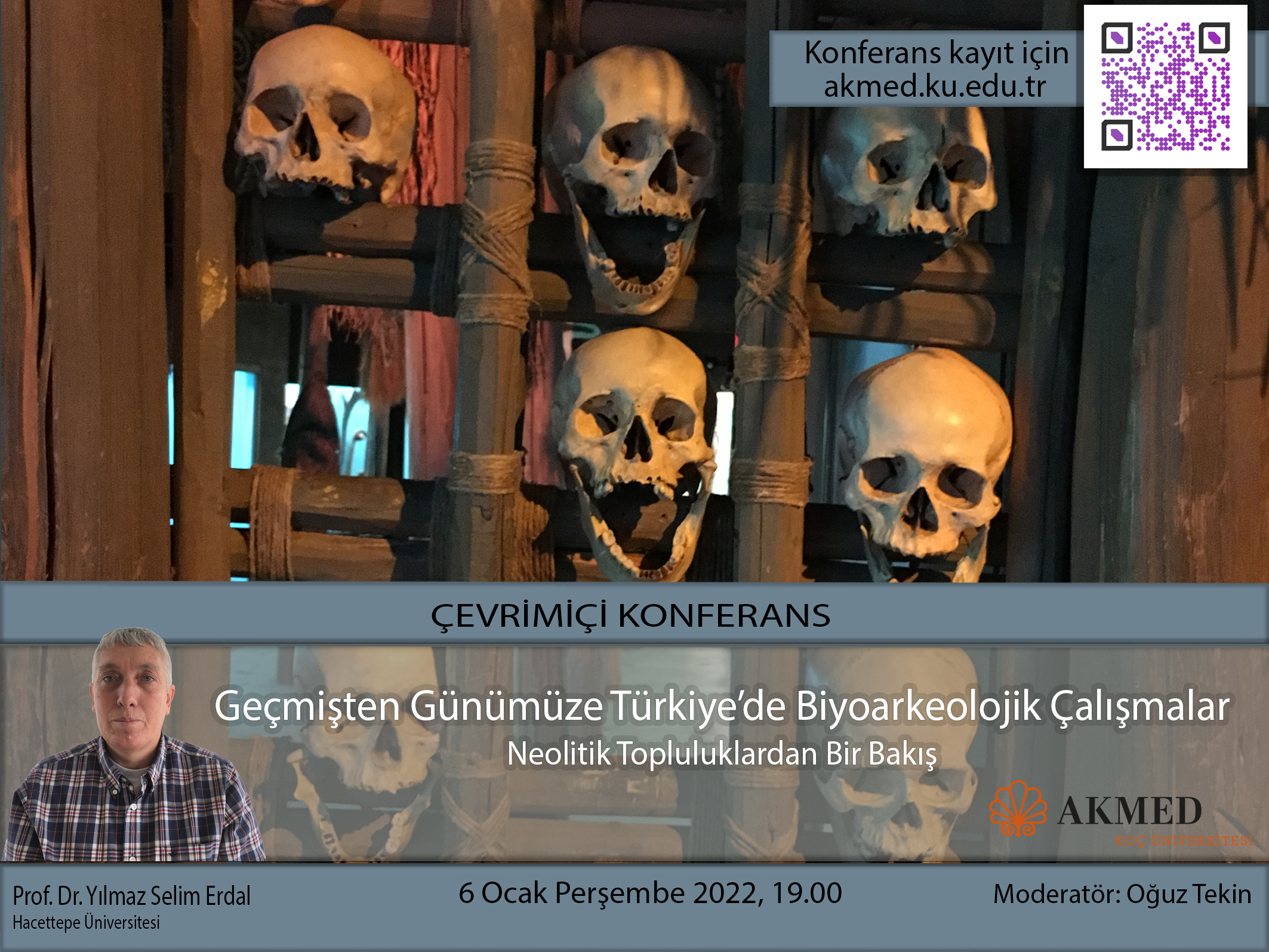Event Detail
Online Conference
Bioarcheological Studies in Türkiye from Past to Present: A View from Neolithic Populations
Prof. Dr. Yılmaz Selim Erdal

Register
The prevailing view in Europe and America during the 18th and 19th centuries was that humans did not change and that the only way to study them was a classification based on “race”. In the late Ottoman period and the early years of the Turkish Republic, this view became the foundation of the efforts in forming a new nation and writing Turkish history through “race”-based studies. “Race” remained as an important factor in bioarcheological studies until the 1970s despite suggestions that the concept of “race” could be used to understand biodiversity while rejecting the inequalities created by it. The onset of World War II was rooted in the inequality of people however, this was also a time when the idea of human beings influenced by environmental factors developed, leading to the concept of changing humans. The first bioarcheological debates, which were approached within the framework of factors such as the development of malaria and anemia, growth, stature, mortality, and population growth, as well as the beginning of agriculture, were put forward on the basis of studies carried out on human skeletal remains in the Mediterranean basin. While studies by Muzaffer Süleyman Şenyürek and Lawrence J. Angel pioneered research in bioarcheology, progress was limited until the 1990s. Studies by Professors Metin Özbek, Erksin Güleç and Berna Alpagut during the 1990s, which focused on subjects such as paleodemography, nutrition, paleopathology, morphology, biodistance and population history continued with the Neolithic period playing a key role in their work. Today, besides conventional bioarcheological research, stable isotope analysis and ancient DNA studies, which have recently gained momentum, have a key role in understanding issues such as sedentary life, the domestication of plants and animals, metallurgy and the establishment of central authority. Research on humans has shifted from the image of a “stable human” to addressing the reflection of radical changes in lifestyle on people and understanding the “transforming human”. This study briefly addresses this transformation.
Start
January 06, 2022 – 19:00
End
January 06, 2022 – 21:00
